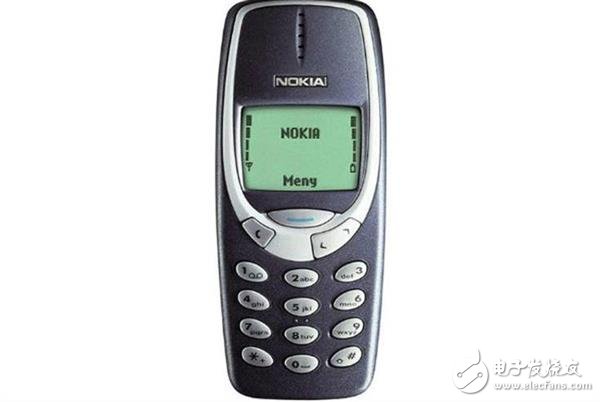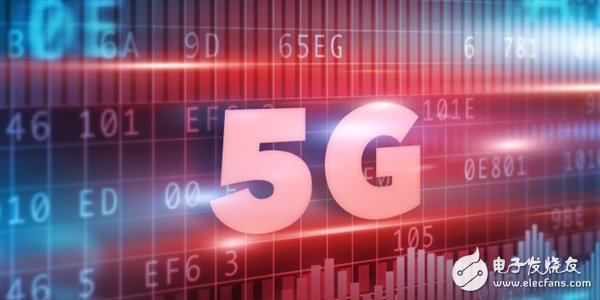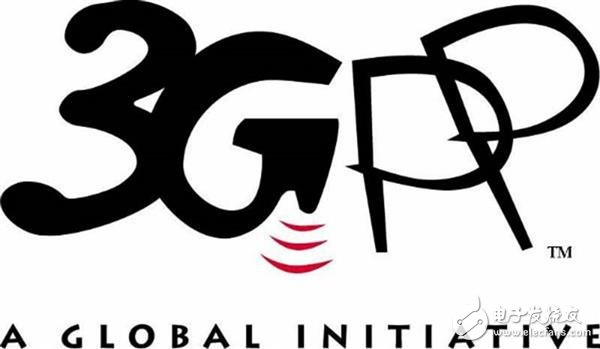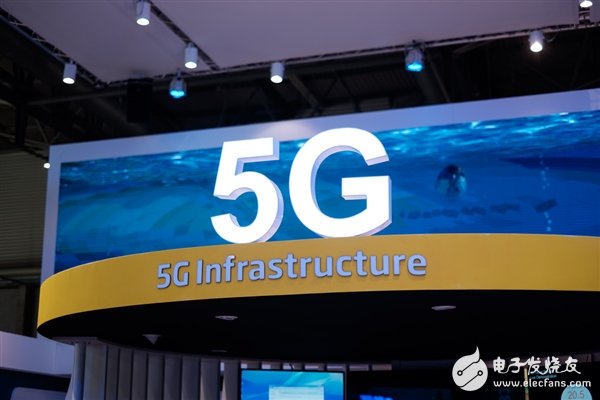Since 2016, the 5G heat has gradually increased. As a next-generation mobile communication network, if a keyword is used to describe 5G, it is "fast".
5G will not only greatly change the way people live and work, improve communication efficiency, but also increase the possibility of many cutting-edge technologies and products.
5G affects the nerves of many enterprises, which is enough to change the pattern of the mobile communication industry and even involve national interests.
We have seen that both foreign companies such as Qualcomm, Intel, and other national enterprises such as Huawei, ZTE, and Lenovo, as well as major telecom operators, are actively deploying 5G, striving to seize the opportunities in the 5G landscape and gain maximum benefits.
The author attempts to explain 5G from different perspectives such as the evolution of mobile communication networks, 5G technology and 5G international standards, so that you have a better understanding of it.

In 1983, Motorola's first commercial mobile phone was put on the market, and its price was 3,995 US dollars, weighing 1.13 kilograms, comparable to the "brick." The Chinese used "big brother" to describe this expensive and bulky mobile phone. At that time, Big Brother was regarded as a symbol of wealth and status, something that many people dreamed of.
With Big Brother, the two can call, and the technology behind it is the first generation cellular mobile communication system (1G). 1G is analog cellular mobile communication, but because it is analog communication, the anti-interference is poor, and the simple FDMA technology makes the frequency reuse degree and system capacity are not high.
Later, mobile phones became smaller and smaller, and performance gradually increased. Nokia and Motorola mobile phone brands began to gain popularity: this is the 2G era. Unlike 1G, 2G is digital communication, and its anti-interference ability is greatly improved.
At the same time, 2G can be said to lay the foundation for the next 3G, such as packet introduction and compatibility modification of the air interface, so that the mobile phone no longer has only a single function such as voice and SMS, and can also access the Internet more efficiently.

If 2G is just to let everyone "early adopt", then the 3G network will bring about a real change. The 3G network can handle a variety of media formats such as images, music, and video streams, and provides a variety of information services including web browsing, teleconferencing, and e-commerce.
However, 3G is too slow, watching videos and playing games, 4G then enters our field of vision, and smartphones emerge.
If 3G allows people to enter the Internet threshold, then 4G stimulates the prosperity of Internet applications, and applications such as instant messaging, online shopping, online payment, online video and online games are emerging one after another.
However, the emergence of new scenes and application requirements such as real-time playback of 4W and 8K video, auto-driving, telemedicine, etc., made 4G “unstoppableâ€, so people began to study 5G, also known as fifth-generation mobile. Communication Systems.

Compared with 4G, the 5G network speed can reach 15Gb per second. This means that high-definition movies, online games, real-time HD video and remote interactions are not a dream.
At the same time, 5G networks have three characteristics: very high rate (eMBB), large capacity (mMTC) and extremely low latency (URLLC). For example, 10Gbps peak data rate, 1ms air interface transmission delay, 3-5 times higher spectral efficiency than 4G and Gigabit connection density per square kilometer and 100 times efficiency improvement.
It is conceivable that by 2020, 5G will provide users with fiber-like access rate, "zero" delay experience, connection capacity of 100 billion devices, ultra-high traffic density, ultra-high connection density and ultra-high mobility. A multi-scene consistent service that realizes the vision of “information to the touch of everythingâ€.
Two major international organizations advancing the 5G standard
Since 5G is so important, many countries and major technology companies are rushing to seize opportunities, occupy the commanding heights, and strive to become 5G leaders.
Different from before, international organizations have actively promoted the development of relevant standards from the outset, refining the 5G process and striving to achieve standardization and globalization. Specifically, the 5G standardization organization is mainly the International Telecommunication Union (ITU) and the 3rd Generation Partnership Project (3GPP), which have different priorities and jointly promote 5G.
ITU: In June 2015, the organization completed the research of the 5G vision; in June 2017, completed the formulation of the minimum technical indicators of IMT-2020 (5G), determined the detailed definition of 14 performance indicators, applicable scenarios, etc., and completed a series of Key documents supporting IMT-2020 candidate technology submission and technical assessment work.
3GPP: It is the world's most influential communication standardization organization, which coordinates the development of standards in the communications field. It is reported that 3GPP will clearly include two versions of 5G, Release 15 (R 15) will be completed in June 2018, and Release 16 (R16) will be completed in September 2019.

R 15 is divided into two sub-phases. The first sub-phase is the 5G standard for non-independent networking (NSA) in December 2017; the second sub-phase is 5G for independent networking (SA) in June 2018. standard. This shows that the 5G standard is a very large and complicated project.
The entanglement of the free interests of votingIn the process of formulating 5G standards, companies, industries, and countries continue to stage interest disputes and competition. Recently, there has been a remark on the Internet that "Lenovo has not voted for Huawei on the 5G solution, but instead voted for Qualcomm", pushing this highly-regarded technology company to the forefront.
Details of the 3GPP voting on the development of the 5G standard can be found on the official website.
Since 3GPP is an open international organization, there are corresponding documents on the records of the three meetings. According to the report of Sanlian Life Weekly, at the first meeting in August 2016, three coding schemes of LDPC, Polar and Turbo were formally proposed. On LDPC, Qualcomm holds 70% of patents. On Polar, Huawei accounts for the majority. The focus of these three conferences is "data channel coding" and "control channel coding".
Among them, Turbo coding can not meet the demanding requirements of 5G for the network. The advantage of LDPC in the "data channel" is outstanding, and the advantage of Polar on the "control channel" is also obvious.

The first meeting voted, and Lenovo did not appear. In the second meeting, Lenovo supported Qualcomm-led LDPC solution. The final result was that 15 companies supported the LDPC solution. Only Huawei supported the Polar solution. Five companies supporting the Turbo+LDPC (mostly Japanese and Korean companies) supported There are 17 LDPC+Polar (mostly Chinese companies).

However, the final decision was not made at the second meeting. In the third meeting, 33 companies including Qualcomm, Samsung, and Nokia were supported by LDPC, while 57 companies including Huawei, ZTE, Xiaomi, and Lenovo were supported by Polar.
Although the number of votes supporting Huawei's Polar is large, the voting rights are not enough. For example, Lenovo and Motorola may have less than one-third of Nokia's voting rights. Due to the low proportion of voting rights, the LDPC solution eventually obtained the full share of the 5G mobile broadband data channel.
In terms of the control channel, Huawei's Polar solution won the victory with absolute advantage!

As a next-generation communication technology, 5G has far-reaching significance and is of great significance. For consumers, it may mean more convenient life and work; for companies in the 5G industry chain, this means new opportunities and new markets.
Therefore, both the enterprise and the country will make every effort to obtain the maximum benefit in this 5G battle.
Onlyrelx Energy8000 vape pen is portable and fashion disposable electronic cigarette, disposable ecigs pen are trending featured vape pen for vapors as it's safety and easy to use. Disposable vape pod,disposable vape, wholesale vape,vape wholesale,vape pen manufacturer and supplier.disposable vape pen,disposable electronic cigarette,disposable ecigs pen,disposable ecigs stick,disposable e-cigs pen,disposable vape factory,disposable vape pod,disposable vape device,vape pen,vape stick, vape wholesale,wholesale vape,customized dispsoable vape pen,customized vape pen,OEM&ODM disposable ecigs pen,disposable electronic cigarette wholesale, wholesale disposable electronic cigarette,distribute vape pen,vape pen distribute,high quality vape pen,high quality vape pod,rechargeable disposable vape pen,refillable vape pen,refilling electronic cigarette,rechargeable disposable electronic cigarette,refillable vape pod,disposable refillable ecigs,disposable refilling e-cigs pen,refillable e-cigs pen
Onlyrelx Energy8000 disposable vape pen,electronic cigarette factory,ecigs factory,ecigs pen,vape pen,wholesale vape,vape distribute,disposable electronic cigarette factory,vape pen manufacturer
Shenzhen Onlyrelx Technology Co.,Ltd , https://www.onlyrelxtech.com
